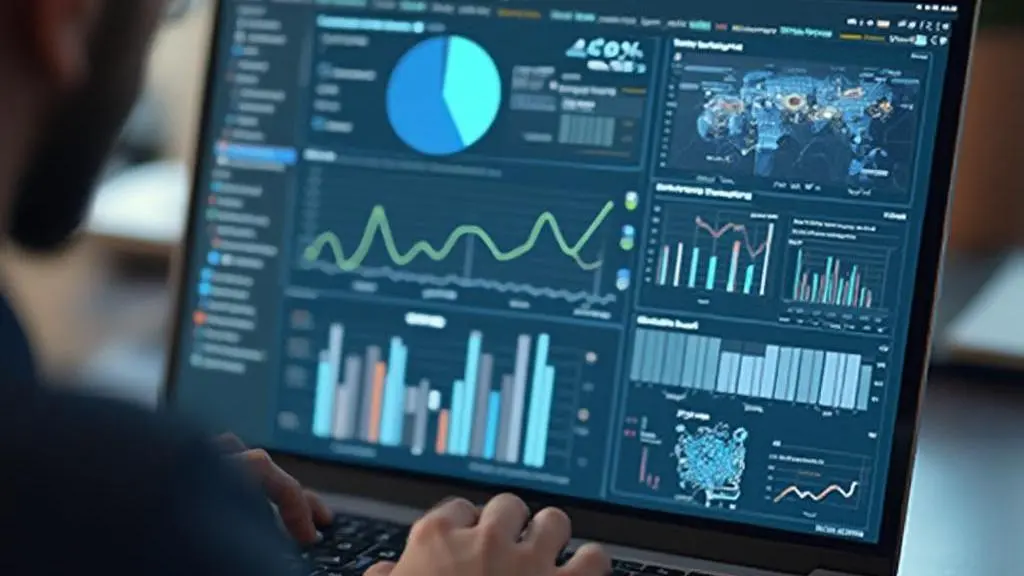Cyber security is a critical concern for organizations today. With the increasing complexity of digital threats, Security Information and Event Management (SIEM) solutions have emerged as essential tools for monitoring and managing security incidents. This guide delves into the importance of SIEM in cyber security, its key components, and how it can be effectively implemented.
Understanding SIEM in Cyber Security
SIEM stands for Security Information and Event Management. It is a combination of security information management (SIM) and security event management (SEM). SIEM solutions provide real-time analysis of security alerts generated by applications and network hardware. By centralizing the storage and interpretation of logs and events from various sources, SIEM tools help organizations detect and respond to security threats more efficiently.
Key components of SIEM include:
- Data Collection: Aggregating data from various sources such as firewalls, antivirus software, and intrusion detection systems.
- Event Correlation: Analyzing data to identify patterns and correlations that indicate potential threats. This process involves complex algorithms that can recognize anomalies and potential security breaches by comparing current data against historical patterns and known threat signatures. For a deeper understanding of vulnerability assessment, refer to this guide.
- Alerting: Generating alerts based on predefined rules and thresholds. Alerts can be customized to notify security teams of specific types of threats or unusual activities, ensuring prompt response and mitigation.
- Reporting: Providing comprehensive reports on security incidents and compliance. Reports can be tailored to meet regulatory requirements and internal auditing needs, offering insights into the organization’s security posture over time.
Implementing SIEM Solutions
Implementing a SIEM solution involves several steps:
- Assessment: Conduct a thorough assessment of your organization’s security needs and infrastructure. This includes identifying critical assets, potential threats, and existing security measures. Understanding the unique vulnerabilities within your network is crucial. For instance, a comprehensive vulnerability assessment can provide insights into areas that need immediate attention.
- Selection: Choose a SIEM tool that meets your requirements. Consider factors such as scalability, ease of use, and integration capabilities. It is essential to select a tool that can grow with your organization and adapt to changing security landscapes.
- Deployment: Deploy the SIEM solution across your network. This involves configuring data sources, setting up dashboards, and defining alert rules. Proper configuration ensures that the SIEM system can effectively monitor and analyze security events. Integrating various data sources, such as firewalls and intrusion detection systems, is key to comprehensive security management. Ensuring that these sources are correctly configured to feed data into the SIEM is vital. This step also involves setting up dashboards that provide real-time visibility into security events and alerts based on predefined rules and thresholds.
- Monitoring and Maintenance: Continuously monitor the SIEM system and update it as needed. Regular maintenance ensures that the system remains effective against evolving threats. This includes updating rules, adjusting thresholds, and integrating new data sources as the network infrastructure evolves. Additionally, conducting regular audits and reviews of the SIEM’s performance can help identify areas for improvement and ensure ongoing effectiveness.
Our managed cloud services can assist in the seamless integration and management of SIEM solutions, ensuring optimal performance and security.
Benefits of SIEM in Cyber Security
SIEM solutions offer several benefits for enhancing cyber security:
- Enhanced Threat Detection: By correlating events from various sources, SIEM tools can detect complex threats that might go unnoticed by individual security measures. This capability is crucial in identifying sophisticated attacks, such as those discussed in our blog on XE Group cybercrime.
- Improved Incident Response: SIEM provides real-time alerts and comprehensive reports, enabling quicker and more effective incident response. This is particularly important in scenarios like the Abyss Locker ransomware attacks, where timely action can prevent significant damage.
- Compliance Management: SIEM tools help organizations meet regulatory requirements by providing detailed logs and reports on security incidents. This ensures that compliance standards are met, as outlined in our guide on cyber security fundamentals.
- Cost Efficiency: By centralizing security management, SIEM solutions can reduce the need for multiple standalone security tools, leading to cost savings. This efficiency is a key aspect of effective infrastructure security strategies.
Optimizing SIEM for Maximum Security
To maximize the benefits of SIEM, consider the following best practices:
- Regular Updates: Keep your SIEM system up to date with the latest threat intelligence and software updates. This ensures that your system can detect and respond to new threats effectively. Regular updates are crucial for maintaining the integrity of your security infrastructure. For more information on threat intelligence, see our guide on cyber threat mitigation.
- Customized Alerts: Tailor alert rules to your organization’s specific needs and risk profile. Custom alerts help in prioritizing threats based on their relevance to your business. This reduces alert fatigue and ensures that critical threats are addressed promptly.
- Integration: Integrate SIEM with other security tools and systems for a holistic approach to cyber security. Integrating SIEM with tools like vulnerability assessment solutions can provide a comprehensive view of your security posture. For insights on vulnerability assessment, refer to our vulnerability assessment guide.
- Training: Ensure that your security team is well-trained in using the SIEM tool effectively. Proper training enables the team to leverage the full capabilities of the SIEM system, improving threat detection and response times. Training is essential for maintaining a robust security posture.
We offer vulnerability assessment and digital security audit services to help you optimize your SIEM implementation. For more information, contact us today.
Final words
SIEM solutions play a crucial role in enhancing cyber security by providing comprehensive threat detection, incident response, and compliance management. By implementing and optimizing SIEM tools, organizations can significantly improve their security posture and protect their digital assets. Whether you need assistance with vulnerability assessment, digital security audit, or managed cloud services, our low-price solutions can help you achieve your security goals.














Leave a Reply